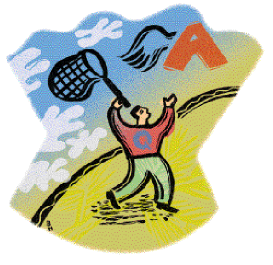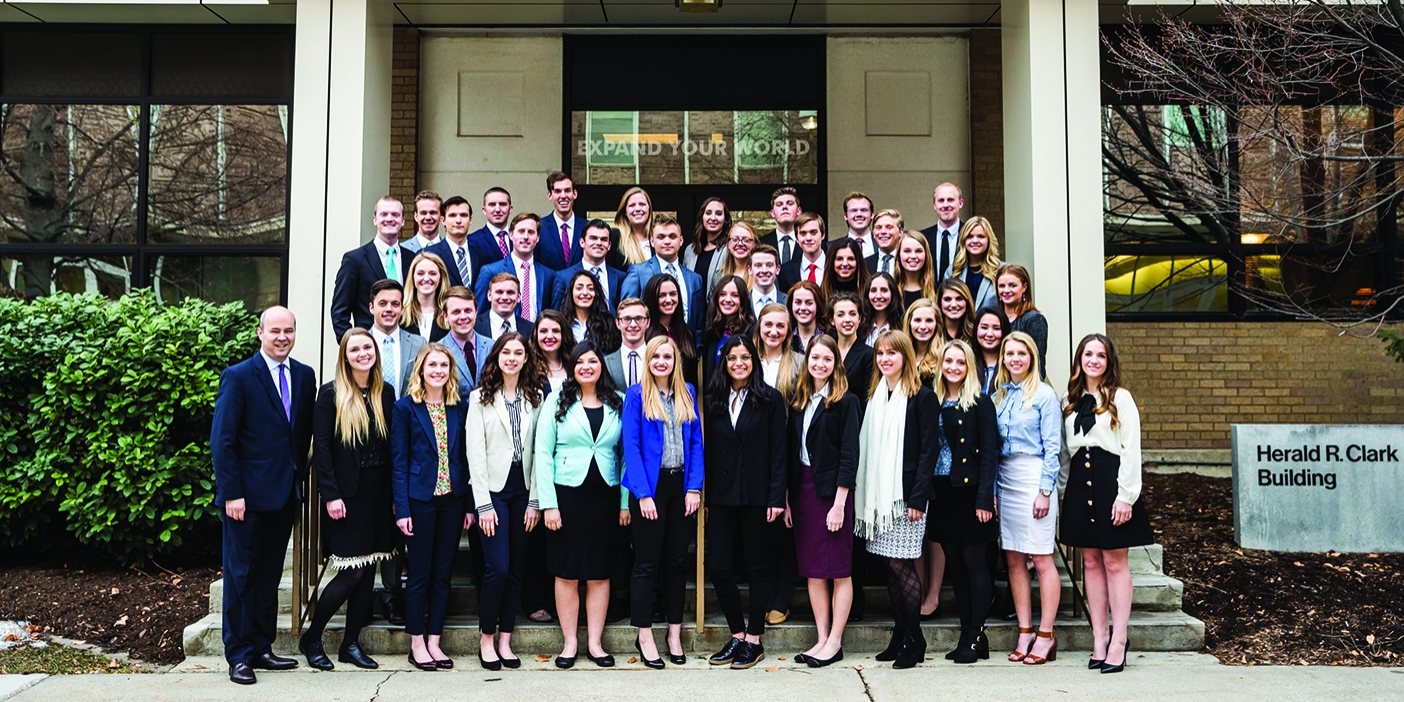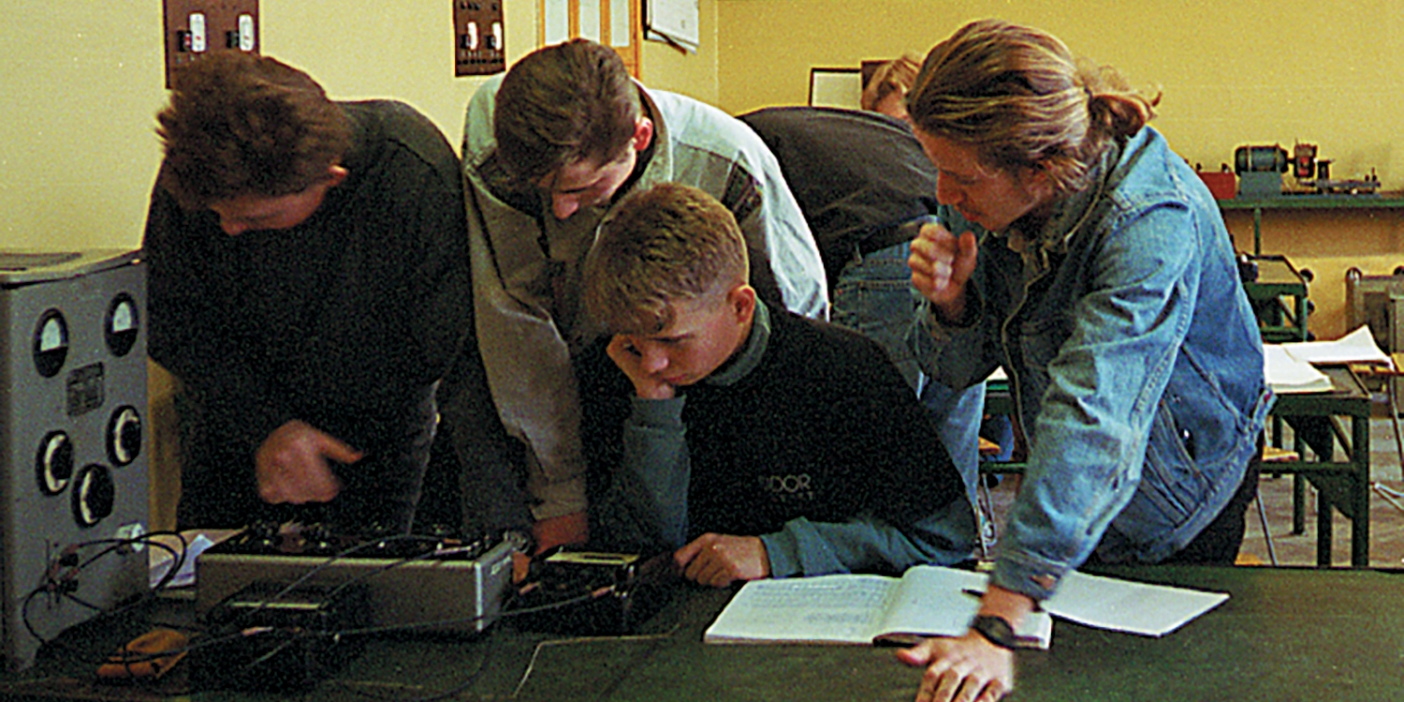A BYU professor has found that the best way to teach children may not be through a teacher’s instruction. It may be through students’ questions.
The theory is that of generative learning, now popularly termed constructivism, and it proposes that children learn best through their own questioning, says Clifford H. Edwards, BYU professor of secondary education.
“Essentially the notion is that people create their own sense of the world,” Edwards says. “Whatever is in your mind is what you put there. You create it.”
As children begin to accumulate knowledge, they are inherently curious and eager to learn, he says. “I would try to teach my own children a lesson or read them a book, but they would ignore me. They were off exploring the world. They would try to find out how things worked.”
Once children can speak, questioning is their essential way of gathering information. “Inquiry is a natural process,” Edwards says. “Children want to ask questions, they want to participate. They have questions on their minds they want answers to. It just seems to be automatic.”
Edwards began noticing the need for inquiry in the classroom back in the early 1980s when he observed a high school class. He was watching for student behavior and student/teacher interaction. What he saw was students who never asked questions.
From that experience he began work on a learning theory that suggested students learn better if they develop and ask their own questions. In 1985, Edwards took leave from BYU to join forces with the forerunners of this theory at Waikato University in New Zealand. Together they refined a generative learning theory, which has evolved into a position at the forefront of modern education.
“Children are curious beings with specific individual capacities that need environments allowing them to experiment and learn,” says Guillem Feixas, a member of the executive board of the Society for Constructivism in the Human Sciences. “The focus should be more centered on the learner than the teacher.”
The traditional school system seems to reverse the natural questioning process. Instead of students asking questions, the teacher assumes this role. “Current school systems assume the teacher is an expert instructing an ignorant learner,” Feixas says.
With teachers asking the questions from the time children are in kindergarten, students no longer question by the time they reach high school. “I don’t think it’s a function of maturation that they stop asking questions,” Edwards says. “I think it’s the way the schools are organized.”
But proponents of constructivism do not suggest scrapping the school system altogether. Rather they encourage a revamping of teachers’ roles in the learning process. Teachers play an important role, according to Edwards, in encouraging inquiry so students can become responsible for their own learning.
“Kids will responsibly learn if they’re given more autonomy,” Edwards says. “You give them help and structure, particularly early on, and when they get older they can do these things without much guidance.”
Edwards proposes three strategies for encouraging student inquiry in the classroom. First, teachers should provide observable phenomena that will prompt questions. A teacher should call attention to details and train students to see scientifically, as though they were to create a hypothesis or question about the subject. Edwards cites an example of a teacher walking with children in the mountains. A teacher could call attention to the texture of a tree, the insects on the tree, and the various kinds of trees. From these starting points, children can ask questions about the teacher’s observations and add their own observations.
“Children do know a lot already,” Feixas says. “Teachers just need to match children’s developmental and individual needs by creating environments for exploration adequate to their specific abilities.”
Second, teachers should encourage students to read up on their interests and show them where they can find the answers to their questions. Through this discovery process students learn that others have had similar questions and have found answers. “This activity can often stimulate extensive research by students on topics of interest,” Edwards says. “A lot of times teachers have the students read a newspaper article and write a report on it, but that should only be a beginning point.”
Third, in an indirect mode of questioning, the teacher can have apparatuses, films, specimens, and other objects available for students to observe, and then the teacher can suggest inquiry topics. “These questions become springboards, promoting interest and hopefully causing students to question on their own,” Edwards says.
Through these strategies, teachers can increase student’s natural sense of inquiry, he says. “This will hopefully cause something that’s died out to reemerge in students–their curiosity.”










